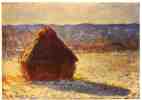Sure you can. But reality is complex, so most artists emphasise one aspect or another. Ask yourself whether a portrait painted by a master can't be capable of conveying more true information than a photograph. As yourself whether Askel's dense, allusive semiotics are not intended to convey a complex, interrelated view of things where a newspaper article would just fall short.
Perspective isn't draftsmanship; it's a systematic theory of how objects are to be represented. In the hands of its most extreme practitioners such as Ucello or Bernini,

what has begun as a tool for the plausible representation of reality becomes a theatrical abstraction, a self-regarding intellectual game in which reality becomes less interesting than the lovely theory that aproximates it with orthagonals and vanishing points. Because reality no longer exists for its own sake but as illustration of theory, whatever's not reducible to the theory become dispensible. The tail wags the dog.
With the exhaustion of the academic style, impressionism represents the next attempt to reduce the world to a manageable theory. In this case, it's a an optical theory of color and reflected light. Line and form recede as mere abstractions, and images are reduced to the composites of light reflected or refracted from and through varying substances. Seurat and Monet perhaps are the most doctrinaire practitioners, and reality becomes a matter of atmospheric conditions and the altitude of the sun.


Cubism probably represents the end of the line as far as figurative theory is concerned. It represents a return to physics, proposing that objects be seen as fractured, viewed simultaneously as multiple planes, including the interior, as though viewed from a universe of 4 spatial dimensions). (Have a look at Picasso's "Three Musicians")

or else as extended through multiple moments of time (Duchamp's "Nude Descending a Staircase" is a memorable example)

As a postscript, there's surrealism. Though it's heavily influenced by Freud, I don't think of surrealism as "theoretical" in the same sense as the above, since surrealism relies so heavily not on application of systematic theory as purely subjective vision. But all of the other movements mentioned, IMO, have in common the conviction that art's power to convey meaning relies on adherence to a rigid theory.